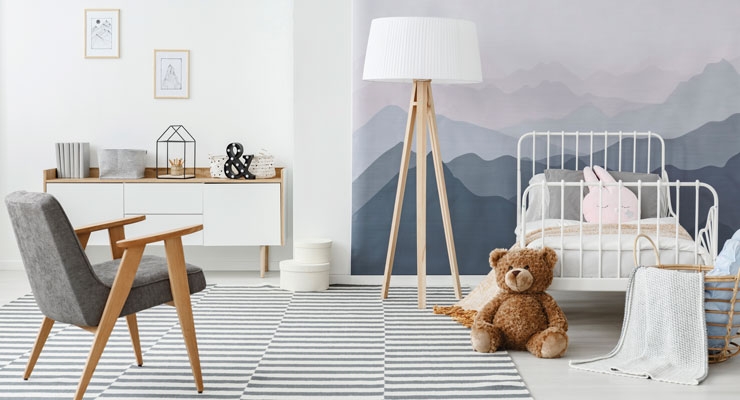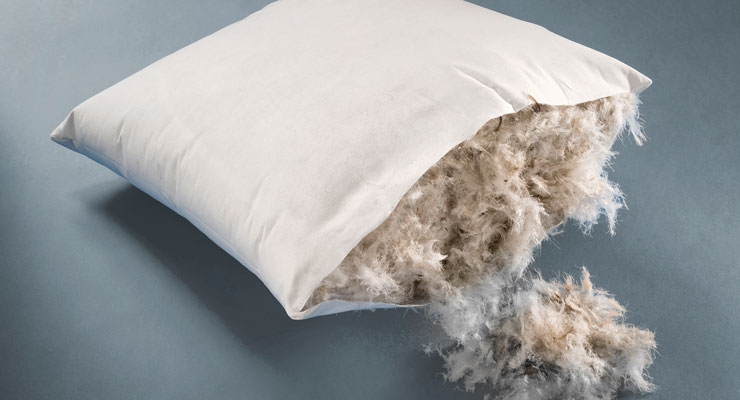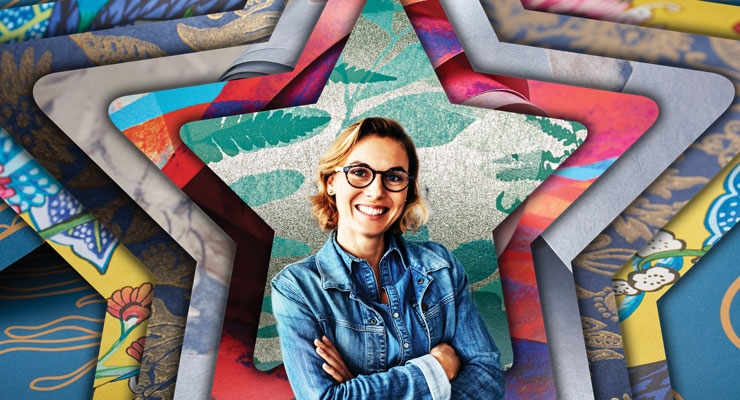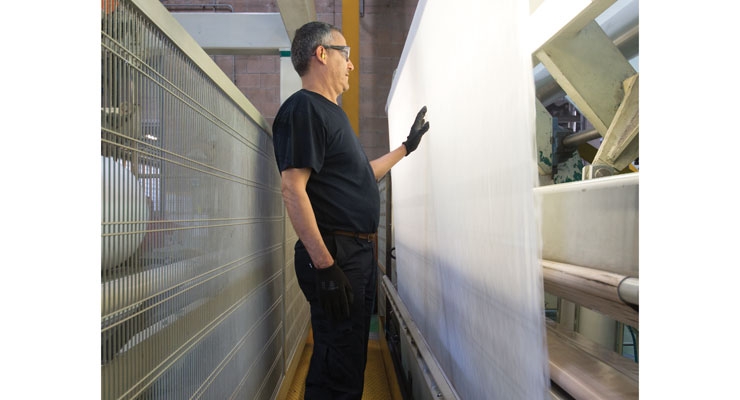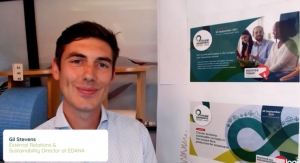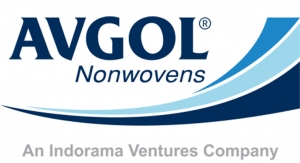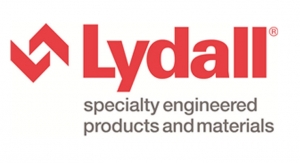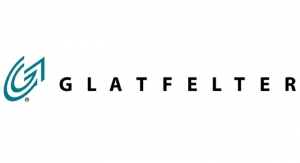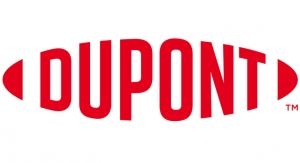Tara Olivo, Associate Editor05.04.18
Nonwovens used for home furnishing applications can be found in virtually every room of the house. While they may not always be seen, such as in carpet underpaddings, drapery liners, scrims and tickings, today’s nonwovens are more textile-like than ever before and are increasingly being applied in more obvious applications like wallcoverings, window treatments, quilts and tablecloths.
One reason nonwovens are favored over other materials is that they’re compact, low weight and relatively price competitive compared to other textiles, according to Serkan Gogus, CEO of Turkish nonwovens producer Mogul.
Mogul offers two key types of nonwovens for home applications. Its Motex range of polypropylene spunbond fabrics have been used for a long time in bedding applications. For spring encasings in beds, Motex is desirable due to its close MD/CD ratio. The substrate is also being used in the quilting process for bedding components.
Mogul considers one of its newest developments, Madaline, a revolutionary substrate for home textile applications. The bicomponent microfilament technology can be treated like any conventional textile—for example, it can be dyed, printed and sewed.
Madaline provides a natural barrier to dust mite particles, and can be used as zippered encasings for duvets, mattresses and pillows, which Gogus claims offers the best protection against dust mite allergies. “Dust mites and their by-products are trapped within the Madaline encasing and the allergic sleeper is not exposed to the dust mite allergic threat,” he explains.
In addition to these applications, Madaline’s diversity also makes it an ideal fabric for table linens, service settings and table runners. The nonwoven is stain resistant, washable, durable, non-linting and low pilling.
Also, due to its multidirectional stability Madaline can be used for window blinds and linings for curtains. Available treatments include printing, dyeing, coatings, UV absorption, fire retardant and hydrophobic attributes and fabrics inherently provide acoustical properties.
German nonwovens producer Sandler’s nonwovens are also being found in many home and workplace applications. Sawaflor (thermally bonded) and sawaloom (needlepunched) nonwovens are applied as upholstery of seat, backrest, armrest and body covers in upholstered furniture or used as the lining of upholstery in cushions for outdoor furniture. Meanwhile, based on thermally bonded nonwovens, the sawatex product line can be laminated on one or both sides to charmeuse, tubular fabric, coarse velour or hydroentangled nonwovens and are used as slip agents or processing aids. “In leather furniture, they add stability to the outer cover. In this way, the nonwovens help to prevent unsightly creases and add to long-term comfort,” says Gerhard Klier, sales director Technical Products, Sandler.
Sandler sawaflor nonwovens are also used in mattresses and bedding, being applied as fillings for quilted mattress covers, mattress protectors and upholstered mattress covers, as well as fillings for bedspreads and quilts.
In the office, Sandler fibercomfort nonwovens are used as upholstery in office chairs or lounge furniture. Also, dimensionally stable, self-supporting product variants are a textile solution for acoustically efficient wall and ceiling systems, suspended ceilings, partitions and even in textile wall decoration, according to Klier.
“The application of nonwoven sound absorbers in acoustic room elements, particularly for offices, is a relatively new area of application,” he continues. “Therefore, new product designs continuously emerge in this market.”
In fact, Sandler itself is benefitting from the functionality of these nonwovens in its own administration buildings in Schwarzenbach/Saale, Germany. They are used in acoustically efficient wall and ceiling systems, providing a quiet atmosphere in an open-plan room design. “No doors are used,” Klier explains. “A special arrangement of glass and acoustic partition walls separates individual workplaces and structures the floor.”
Meanwhile, Jones Nonwovens, based in Humboldt, TN, manufactures a variety of products that are used to construct mattresses, including products engineered to meet performance requirements for FR barriers; comfort layers; structural insulators and foundation components. It’s also expanding its product line to meet technical performance criteria in thermal insulation applications.
The latest news from the company is its recent investment at its North Las Vegas facility. The reasoning behind the investment, which doubled capacity at the site, was to fulfill the rapidly growing demand for natural fiber and other sustainable fiber products for manufacturing and packaging. With this expansion, Jones is now able to create new and differentiated products on the new airlaid production line, with some of the products targeting “comfort layers” in traditional mattress constructions and base support layers in one-sided mattress constructions.
The addition of airlaid technology complements the carding, needling and thermal bonding capabilities in operation at its North Las Vegas, Humboldt and Morristown, TN, facilities. “Airlaid technology provides for products with unique attributes that complement our line of products produced with the carding process,” says Steve Wolf, vice president of engineering for Jones Nonwovens.
The capex investment in airlaid products is a part of a larger strategic plan to diversify Jones’ product line and market scope.
Meanwhile, recent new developments from Freudenberg Performance Materials include the launch of its latest rendition of its microfilament material Evolon—Evolon New Generation. Evolon New Generation is made from super-microfilaments that are half the thickness and twice the density of those used in the original Evolon fabrics.
Thanks to a great balance of breathability, permeability to water vapor and thermal insulation, the new material provides the best combination of thermo-physiological properties for unparalleled comfort, according to Freudenberg.
Because the new textile is twice as dense as the original version, it significantly increases its filtration performance. While the original Evolon is a good solution for the manufacture of anti-mite encasings that help allergy sufferers, Evolon New Generation provides a specific solution for top-quality bed linen or feather-filled pillows and quilts, filtering even tinier allergens, dust particles and down filling.
In addition to its functional benefits, Evolon New Generation helps to conserve resources. The super-microfilaments are 200 times thinner than a human hair, making the new textile remarkably resistant to mechanical stress, abrasion and repeated washing. This improved durability keeps the fabric looking good and maintains consistent performance, wash after wash, according to Dr. Frank Heislitz, CEO of Freudenberg Performance Materials.
“Because it is much lighter than traditional textiles, the new super-microfilament textile also enables professional laundries to improve their eco balance. In addition, no solvents or binding agents are used in the production process and far less water is consumed than for producing conventional cotton-based fabrics,” he says.
Walls, Windows and Tabletop
For home applications, Ahlstrom-Munksjö’s specialty lies in the wallcoverings sector. In fact, this year the company is expanding its fiber-based solutions for this market with two new brands.
First, Ahlstrom-Munksjö WallStar will feature a variety of high quality nonwovens with surface aspects, features and functionalities for all printing processes. “This offers unlimited scope for designers’ imagination,” says Peggy Lazian, head of sales and product management – Wallcover, Filtration & Performance – Ahlstrom-Munksjö. “Our directly printable nonwovens have endless variations in structure and surface effects. Coated and uncoated, embossed and smooth, our textile-like wallcovering media will give an unique luxurious aspect to the walls.”
Also in this product range is Ahlstrom-Munksjö WallStar Digital, a range suitable for all digital printing technologies with excellent printability, as well as WallStar Digital Spray & Up, a new generation of nonwoven media, delivering a totally new installation experience. “Just spray the water on the wall and apply the wallcover directly,” Lazian explains.
Meanwhile, Ahlstrom-Munksjö WallWise is a substrate that aims to bring all nonwoven benefits—easy to use, textile touch—at an affordable price.
According to Lazian, the ease of use continues to be the key factor of why nonwoven substrates are replacing paper substrates. “Nonwoven materials are so much easier to get onto the wall, as well as remove from the wall. The job of decoration and indeed re-decoration is quicker, easier and cleaner,” she explains.
Further, she adds, compared to other products utilized within the wall decoration market, such as paint, Ahlstrom-Munksjö’s nonwovens offer a much greater opportunity for three-dimensional appearances and attractive designs. “Consumers are generally looking for more in their home design than plain painted walls,” she notes.
According to Ahlstrom-Munksjö, today nonwovens represent more than 60% of the wallcover basis in Europe, and more than 80% in China and Japan, and this share is still growing with the shortage of paper supply.
For its part, Hollingsworth & Vose has been involved in the home furnishings market for more than 40 years. Its first product for this market was Hovotex nonwoven buckram, a washable and dry-cleanable stiffener used to hold the pleats in pinch-pleat draperies. While the company still produces Hovotex, changes in window fashions over the years have relegated pinch-pleat drapes to mainly the hotel-motel business.
According to H&V, alternative window coverings such as cellular shades, vertical blinds and pleated shades have grown in market share and nonwovens play a significant role in the alternative window covering market. Nonwovens can provide the necessary physical properties as well as aesthetic appeal to alternative window coverings at a fraction of the price of a decorative woven fabric. This is especially true in cellular shades, where the material needs to be UV stable, have good pleat retention and thermal stability but still have a pleasing appearance. Nonwovens used in cellular shade applications are typically in the range of 35 to 60 grams per square meter and good uniformity is critical. Hollingsworth & Vose is able to produce a variety of nonwovens in this weight range with excellent uniformity, the company says.
In the tabletop market, Italian nonwovens producer Orma provides solutions for napkins and tablecovers. Its range of nonwovens for these applications, based on an innovative multilayer spunlace, offers quality printing performances and a textile-like feel.
According to Orma sales manager Paolo Caprioli, the introduction of spunlace in disposable tabletop applications has increased the desire for premium quality. “Compared to tissue and airlaid, spunlace has a textile feeling, it is very soft, gentle and it maintains its resistance in dry and wet conditions,” he says. “The perception is to have something close to the standard textile fabrics.”
Alongside its standard offerings for the tabletop market, Orma recently introduced new environmentally sustainable products that are biodegradable and compostable (UNI 13432:2000 certified). These solutions feature a special multilayer spunlace made with bamboo and pulp, which, according to Caprioli, offers homogeneity and a silky feeling.
Meanwhile, Italian spunbond producer RadiciGroup markets its Dylar spunbond nonwoven for disposable tablecloths in the HORECA sector, as well as in home interior applications such as internal supports for sofas and chairs and in bedding as mattress ticking and spring pocket wrapping.
According to Enrico Buriani, extrusion yarn business area manager for RadiciGroup, demand for nonwovens, especially in the HORECA market, is increasing mainly due to the need of reducing water consumption and reducing the use of detergents. “This is following the trend of reducing environmental pollution and water saving,” he adds.
Radici has been manufacturing on STP Technology lines, but beginning in April, the company has added bicomponent capabilities using Farè technology. “One of the most important factors in the production of spunbond is the electric energy requirements,” says Buriani. “The new line from Farè will use a lower amount of specific power than the existing lines.”
Further, the new bico line will allow RadiciGroup to offer new products with specific features that could match the increasing need of softness for both tablecloths and spring pockets, he adds.
More “Green” Solutions
For Jones, environmental sustainability isn’t a new trend. “Sustainability is the new norm but not to us. It’s been a guiding philosophy of our manufacturing for over 80 years,” says Andrew Dailey, vice president of sales for Jones Nonwovens.
A part of Jones’ sustainable approach is made possible with the help of bast fibers: hemp, jute, kenaf, sisal and flax. According to the company, these are high-quality, low maintenance fibers that don’t require chemicals or pesticides and put nutrients back into the earth. The company believes that sustainability doesn’t have to be sacrificed to meet performance and economic objectives. In fact, it has developed many products with sustainable principles as the blueprint for product differentiation and performance efficacy.
Part of Jones’ strategy is to continue to search for new areas of application or what they call “construction zones” in its customers’ products that use other raw materials. According to the company, inflation is severely impacting synthetic materials, thus Jones is introducing alternative engineered nonwovens for these applications. An example of this is the use of natural fibers for producing packaging that meets insulation, protective and, most importantly, sustainable objectives. Ideal for packaging perishable foods and meal kits, bast and cotton fibers obtained from post-harvest plants and textile by-products are a biodegradable solution. According to Jones, their naturally recyclable properties make them the ecological choice for a farm-to-packaging process that maintains the cold chain at no added cost.
Meanwhile, Mogul’s Gogus sees a trend of customers requesting more post-consumer recycled products as well as having the final product be recyclable to reduce the environmental footprint. Nonwovens are ideal for this because they are usually recyclable products. “We try to develop natural based products and try to use post consumer recycled raw materials,” he says.
One reason nonwovens are favored over other materials is that they’re compact, low weight and relatively price competitive compared to other textiles, according to Serkan Gogus, CEO of Turkish nonwovens producer Mogul.
Mogul offers two key types of nonwovens for home applications. Its Motex range of polypropylene spunbond fabrics have been used for a long time in bedding applications. For spring encasings in beds, Motex is desirable due to its close MD/CD ratio. The substrate is also being used in the quilting process for bedding components.
Mogul considers one of its newest developments, Madaline, a revolutionary substrate for home textile applications. The bicomponent microfilament technology can be treated like any conventional textile—for example, it can be dyed, printed and sewed.
Madaline provides a natural barrier to dust mite particles, and can be used as zippered encasings for duvets, mattresses and pillows, which Gogus claims offers the best protection against dust mite allergies. “Dust mites and their by-products are trapped within the Madaline encasing and the allergic sleeper is not exposed to the dust mite allergic threat,” he explains.
In addition to these applications, Madaline’s diversity also makes it an ideal fabric for table linens, service settings and table runners. The nonwoven is stain resistant, washable, durable, non-linting and low pilling.
Also, due to its multidirectional stability Madaline can be used for window blinds and linings for curtains. Available treatments include printing, dyeing, coatings, UV absorption, fire retardant and hydrophobic attributes and fabrics inherently provide acoustical properties.
German nonwovens producer Sandler’s nonwovens are also being found in many home and workplace applications. Sawaflor (thermally bonded) and sawaloom (needlepunched) nonwovens are applied as upholstery of seat, backrest, armrest and body covers in upholstered furniture or used as the lining of upholstery in cushions for outdoor furniture. Meanwhile, based on thermally bonded nonwovens, the sawatex product line can be laminated on one or both sides to charmeuse, tubular fabric, coarse velour or hydroentangled nonwovens and are used as slip agents or processing aids. “In leather furniture, they add stability to the outer cover. In this way, the nonwovens help to prevent unsightly creases and add to long-term comfort,” says Gerhard Klier, sales director Technical Products, Sandler.
Sandler sawaflor nonwovens are also used in mattresses and bedding, being applied as fillings for quilted mattress covers, mattress protectors and upholstered mattress covers, as well as fillings for bedspreads and quilts.
In the office, Sandler fibercomfort nonwovens are used as upholstery in office chairs or lounge furniture. Also, dimensionally stable, self-supporting product variants are a textile solution for acoustically efficient wall and ceiling systems, suspended ceilings, partitions and even in textile wall decoration, according to Klier.
“The application of nonwoven sound absorbers in acoustic room elements, particularly for offices, is a relatively new area of application,” he continues. “Therefore, new product designs continuously emerge in this market.”
In fact, Sandler itself is benefitting from the functionality of these nonwovens in its own administration buildings in Schwarzenbach/Saale, Germany. They are used in acoustically efficient wall and ceiling systems, providing a quiet atmosphere in an open-plan room design. “No doors are used,” Klier explains. “A special arrangement of glass and acoustic partition walls separates individual workplaces and structures the floor.”
Meanwhile, Jones Nonwovens, based in Humboldt, TN, manufactures a variety of products that are used to construct mattresses, including products engineered to meet performance requirements for FR barriers; comfort layers; structural insulators and foundation components. It’s also expanding its product line to meet technical performance criteria in thermal insulation applications.
The latest news from the company is its recent investment at its North Las Vegas facility. The reasoning behind the investment, which doubled capacity at the site, was to fulfill the rapidly growing demand for natural fiber and other sustainable fiber products for manufacturing and packaging. With this expansion, Jones is now able to create new and differentiated products on the new airlaid production line, with some of the products targeting “comfort layers” in traditional mattress constructions and base support layers in one-sided mattress constructions.
The addition of airlaid technology complements the carding, needling and thermal bonding capabilities in operation at its North Las Vegas, Humboldt and Morristown, TN, facilities. “Airlaid technology provides for products with unique attributes that complement our line of products produced with the carding process,” says Steve Wolf, vice president of engineering for Jones Nonwovens.
The capex investment in airlaid products is a part of a larger strategic plan to diversify Jones’ product line and market scope.
Meanwhile, recent new developments from Freudenberg Performance Materials include the launch of its latest rendition of its microfilament material Evolon—Evolon New Generation. Evolon New Generation is made from super-microfilaments that are half the thickness and twice the density of those used in the original Evolon fabrics.
Thanks to a great balance of breathability, permeability to water vapor and thermal insulation, the new material provides the best combination of thermo-physiological properties for unparalleled comfort, according to Freudenberg.
Because the new textile is twice as dense as the original version, it significantly increases its filtration performance. While the original Evolon is a good solution for the manufacture of anti-mite encasings that help allergy sufferers, Evolon New Generation provides a specific solution for top-quality bed linen or feather-filled pillows and quilts, filtering even tinier allergens, dust particles and down filling.
In addition to its functional benefits, Evolon New Generation helps to conserve resources. The super-microfilaments are 200 times thinner than a human hair, making the new textile remarkably resistant to mechanical stress, abrasion and repeated washing. This improved durability keeps the fabric looking good and maintains consistent performance, wash after wash, according to Dr. Frank Heislitz, CEO of Freudenberg Performance Materials.
“Because it is much lighter than traditional textiles, the new super-microfilament textile also enables professional laundries to improve their eco balance. In addition, no solvents or binding agents are used in the production process and far less water is consumed than for producing conventional cotton-based fabrics,” he says.
Walls, Windows and Tabletop
For home applications, Ahlstrom-Munksjö’s specialty lies in the wallcoverings sector. In fact, this year the company is expanding its fiber-based solutions for this market with two new brands.
First, Ahlstrom-Munksjö WallStar will feature a variety of high quality nonwovens with surface aspects, features and functionalities for all printing processes. “This offers unlimited scope for designers’ imagination,” says Peggy Lazian, head of sales and product management – Wallcover, Filtration & Performance – Ahlstrom-Munksjö. “Our directly printable nonwovens have endless variations in structure and surface effects. Coated and uncoated, embossed and smooth, our textile-like wallcovering media will give an unique luxurious aspect to the walls.”
Also in this product range is Ahlstrom-Munksjö WallStar Digital, a range suitable for all digital printing technologies with excellent printability, as well as WallStar Digital Spray & Up, a new generation of nonwoven media, delivering a totally new installation experience. “Just spray the water on the wall and apply the wallcover directly,” Lazian explains.
Meanwhile, Ahlstrom-Munksjö WallWise is a substrate that aims to bring all nonwoven benefits—easy to use, textile touch—at an affordable price.
According to Lazian, the ease of use continues to be the key factor of why nonwoven substrates are replacing paper substrates. “Nonwoven materials are so much easier to get onto the wall, as well as remove from the wall. The job of decoration and indeed re-decoration is quicker, easier and cleaner,” she explains.
Further, she adds, compared to other products utilized within the wall decoration market, such as paint, Ahlstrom-Munksjö’s nonwovens offer a much greater opportunity for three-dimensional appearances and attractive designs. “Consumers are generally looking for more in their home design than plain painted walls,” she notes.
According to Ahlstrom-Munksjö, today nonwovens represent more than 60% of the wallcover basis in Europe, and more than 80% in China and Japan, and this share is still growing with the shortage of paper supply.
For its part, Hollingsworth & Vose has been involved in the home furnishings market for more than 40 years. Its first product for this market was Hovotex nonwoven buckram, a washable and dry-cleanable stiffener used to hold the pleats in pinch-pleat draperies. While the company still produces Hovotex, changes in window fashions over the years have relegated pinch-pleat drapes to mainly the hotel-motel business.
According to H&V, alternative window coverings such as cellular shades, vertical blinds and pleated shades have grown in market share and nonwovens play a significant role in the alternative window covering market. Nonwovens can provide the necessary physical properties as well as aesthetic appeal to alternative window coverings at a fraction of the price of a decorative woven fabric. This is especially true in cellular shades, where the material needs to be UV stable, have good pleat retention and thermal stability but still have a pleasing appearance. Nonwovens used in cellular shade applications are typically in the range of 35 to 60 grams per square meter and good uniformity is critical. Hollingsworth & Vose is able to produce a variety of nonwovens in this weight range with excellent uniformity, the company says.
In the tabletop market, Italian nonwovens producer Orma provides solutions for napkins and tablecovers. Its range of nonwovens for these applications, based on an innovative multilayer spunlace, offers quality printing performances and a textile-like feel.
According to Orma sales manager Paolo Caprioli, the introduction of spunlace in disposable tabletop applications has increased the desire for premium quality. “Compared to tissue and airlaid, spunlace has a textile feeling, it is very soft, gentle and it maintains its resistance in dry and wet conditions,” he says. “The perception is to have something close to the standard textile fabrics.”
Alongside its standard offerings for the tabletop market, Orma recently introduced new environmentally sustainable products that are biodegradable and compostable (UNI 13432:2000 certified). These solutions feature a special multilayer spunlace made with bamboo and pulp, which, according to Caprioli, offers homogeneity and a silky feeling.
Meanwhile, Italian spunbond producer RadiciGroup markets its Dylar spunbond nonwoven for disposable tablecloths in the HORECA sector, as well as in home interior applications such as internal supports for sofas and chairs and in bedding as mattress ticking and spring pocket wrapping.
According to Enrico Buriani, extrusion yarn business area manager for RadiciGroup, demand for nonwovens, especially in the HORECA market, is increasing mainly due to the need of reducing water consumption and reducing the use of detergents. “This is following the trend of reducing environmental pollution and water saving,” he adds.
Radici has been manufacturing on STP Technology lines, but beginning in April, the company has added bicomponent capabilities using Farè technology. “One of the most important factors in the production of spunbond is the electric energy requirements,” says Buriani. “The new line from Farè will use a lower amount of specific power than the existing lines.”
Further, the new bico line will allow RadiciGroup to offer new products with specific features that could match the increasing need of softness for both tablecloths and spring pockets, he adds.
More “Green” Solutions
For Jones, environmental sustainability isn’t a new trend. “Sustainability is the new norm but not to us. It’s been a guiding philosophy of our manufacturing for over 80 years,” says Andrew Dailey, vice president of sales for Jones Nonwovens.
A part of Jones’ sustainable approach is made possible with the help of bast fibers: hemp, jute, kenaf, sisal and flax. According to the company, these are high-quality, low maintenance fibers that don’t require chemicals or pesticides and put nutrients back into the earth. The company believes that sustainability doesn’t have to be sacrificed to meet performance and economic objectives. In fact, it has developed many products with sustainable principles as the blueprint for product differentiation and performance efficacy.
Part of Jones’ strategy is to continue to search for new areas of application or what they call “construction zones” in its customers’ products that use other raw materials. According to the company, inflation is severely impacting synthetic materials, thus Jones is introducing alternative engineered nonwovens for these applications. An example of this is the use of natural fibers for producing packaging that meets insulation, protective and, most importantly, sustainable objectives. Ideal for packaging perishable foods and meal kits, bast and cotton fibers obtained from post-harvest plants and textile by-products are a biodegradable solution. According to Jones, their naturally recyclable properties make them the ecological choice for a farm-to-packaging process that maintains the cold chain at no added cost.
Meanwhile, Mogul’s Gogus sees a trend of customers requesting more post-consumer recycled products as well as having the final product be recyclable to reduce the environmental footprint. Nonwovens are ideal for this because they are usually recyclable products. “We try to develop natural based products and try to use post consumer recycled raw materials,” he says.

